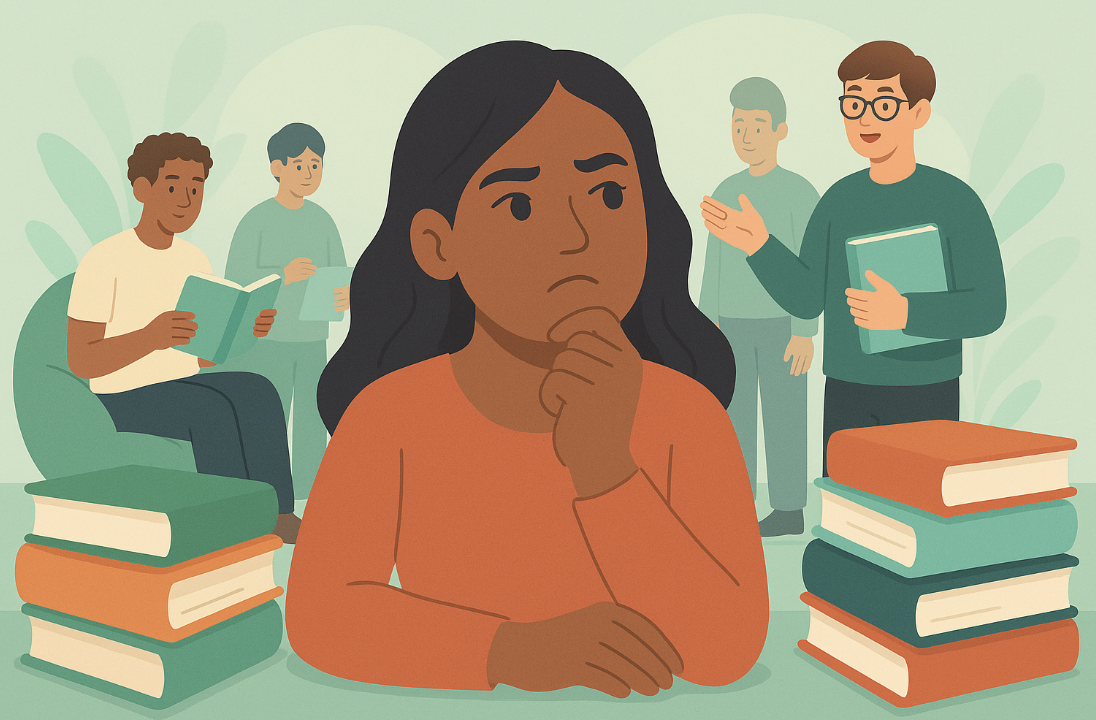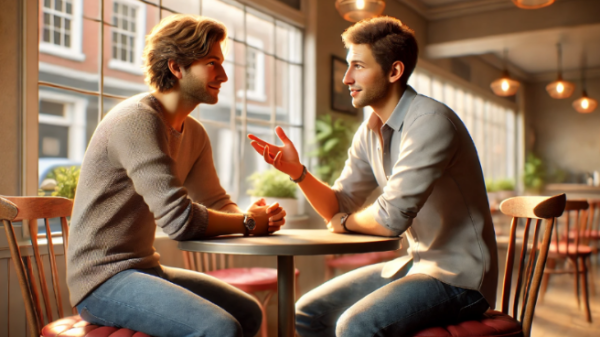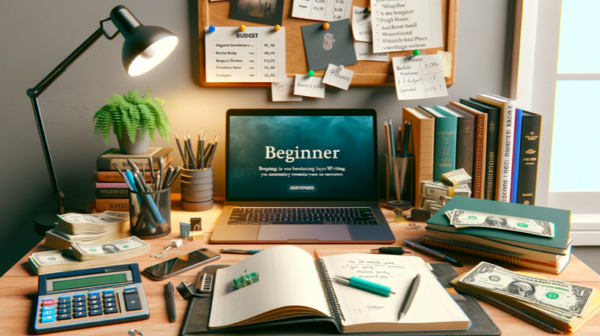Would you ever hit “rewind” on life and relive a moment? Maybe not when you spilled coffee during a job interview, but the good moments, like a first win or a meaningful conversation. In storytelling, writers have a tool for that: it’s called a flashback.
What is a flashback, you ask? It’s a clever literary device that lets characters—and readers—travel back in time to experience past events. Think of it as a narrative time machine, minus the complicated wiring (and potential for paradoxes).
In simple terms, the flashback definition boils down to this: a scene that interrupts the present storyline to reveal something important from the past. Whether it’s a childhood memory that explains a character’s deep fear, or a long-lost romance that shapes an entire plot, flashbacks enrich stories by filling in the blanks—and sometimes creating even more delicious mysteries.
In this article, we’ll explore exactly what makes flashbacks tick, why writers can’t seem to get enough of them, and some of the best examples in literature that prove a journey into the past can be just as thrilling as racing toward the future. Let’s step back in time and get started.
What is a Flashback? Definition and Meaning
In the simplest terms, a flashback is a literary device that transports readers from the present storyline into a past event. It’s like taking a carefully timed detour to uncover critical information that shapes the story’s current action. Writers use flashbacks to fill in gaps, explain character motivations, or reveal secrets that would otherwise remain hidden.
The formal flashback definition goes something like this:
“A flashback is an interruption of the chronological sequence of a narrative to present an earlier event, often used to provide background or context to the current story.”
In other words, when a character suddenly recalls a traumatic childhood experience or when a narrator shifts the scene to a decade earlier, that’s a flashback at work. It’s the literary version of answering a question you didn’t know you needed to ask.
What is a flashback in action? Think about when a novel jumps back to a hero’s first love or a villain’s first betrayal. These scenes aren’t just tossed in for drama; they serve a specific purpose — adding depth, emotion, and sometimes a bit of mystery to the unfolding plot.
At its best, a flashback doesn’t feel like a pause—it feels like a vital piece of the story falling into place, helping readers connect the dots between past and present.
Your Publishing Journey Awaits – Start NowTypes of Flashbacks: Quick Memory or Deep Dive?
Not all flashbacks are created equal. Understanding the flashback definition helps writers choose different styles of flashbacks depending on how much they want to reveal and how they want to affect the story’s pacing. Here are the two main types you’ll often see:
- Short or Brief Flashbacks
These are quick memories that pop up within a scene without pulling the reader too far from the main storyline. They’re usually triggered by an object, a sound, or an emotional reaction.
Example: In The Hunger Games, Katniss recalls her father’s advice or her struggles in District 12 through short, vivid flashbacks that deepen her character without slowing the action. - Extended or Full-Scene Flashbacks
These flashbacks take readers fully into the past for an entire scene, chapter, or sequence. They often explain critical backstory that reshapes how readers understand the present plot.
Example: In The Great Gatsby, Gatsby’s romantic past with Daisy is revealed through extended flashback scenes, dramatically changing how we view his obsession. - Bonus: Non-Linear Storytelling
Some books go beyond occasional flashbacks and structure the entire narrative around past and present, blending.
Example: Slaughterhouse-Five by Kurt Vonnegut uses non-linear time shifts to reflect the trauma of war, making flashbacks feel like an inseparable part of the character’s reality.
Why Writers Love Flashbacks: 3 Powerful Reasons
If flashbacks were tools, they’d be the Swiss Army knife of storytelling. Flexible, powerful, and capable of doing a lot with just a few well-placed scenes. But why exactly do writers reach for this technique again and again? It’s not just because it’s flashy (pun very much intended).
Here are three big reasons flashbacks are so beloved:
1. They Reveal Essential Backstory
Every character has a past that shapes who they are. Flashbacks allow writers to peel back the layers and show the events that made a hero brave, a villain bitter, or a friendship unbreakable. Without these glimpses into the past, readers might struggle to fully understand or sympathize with a character’s actions.
2. They Deepen Emotional Connections
It’s one thing to tell readers that a character is grieving; it’s another to show them the heartbreaking moment that caused it. Flashbacks immerse readers directly into formative experiences, making the emotions richer and more believable. It’s like opening a diary instead of reading a resume.
3. They Add Suspense and Mystery
Sometimes, the past holds secrets that the present can’t yet explain. Strategic flashbacks slowly reveal information, keeping readers guessing and encouraging them to piece the story together like a puzzle. Whether it’s a hidden betrayal or a forgotten promise, flashbacks can drip-feed crucial details at just the right moments.
At their core, flashbacks aren’t just about reminiscing — they’re about enriching the present with the weight of the past. When used skillfully, they can transform a straightforward story into a layered, unforgettable experience.
Flashback Examples in Literature: Iconic Moments
Great stories often hide their most powerful moments not in the future, but in the past. Some of literature’s most unforgettable scenes are powerful examples of flashback that reveal hidden truths, deepen character arcs, or flip the story upside down. Let’s step back into some of the most iconic flashback moments ever written:
1. To Kill a Mockingbird by Harper Lee
The novel is framed as Scout Finch reflecting on her childhood in the racially charged town of Maycomb, Alabama. Through vivid flashbacks to events like Atticus Finch defending Tom Robinson, readers not only witness Scout’s loss of innocence but also see the ingrained prejudices of society. To Kill a Mockingbird remains one of the most iconic flashback examples in literature, with its use of memory giving the novel a bittersweet tone and a powerful moral core.
2. The Great Gatsby by F. Scott Fitzgerald
Jay Gatsby’s obsessive love for Daisy Buchanan unfolds through carefully placed flashbacks. These moments, often triggered by conversations or objects (like the green light at the end of Daisy’s dock), reveal Gatsby’s impossible longing to recreate the past. Without the slow unraveling of these memories, the novel would lose much of its emotional tragedy and commentary on the American Dream.
3. Beloved by Toni Morrison
In Beloved, flashbacks are fragmented, emotional, and often painful. Sethe’s memories of her life as a runaway slave—and the unimaginable choices she had to make—surface throughout the novel. Morrison uses flashbacks not just as exposition, but as an emotional force that overwhelms characters and readers alike, showing how the past remains hauntingly alive.
4. Of Mice and Men by John Steinbeck
Steinbeck uses subtle conversational flashbacks between George and Lennie to provide glimpses into their shared history. Stories of childhood promises and dreams of owning land are repeated like comforting mantras. These small flashbacks not only build sympathy for the characters but also hint at the looming tragedy, making the final scenes even more devastating.
5. Wuthering Heights by Emily Brontë
The entire narrative structure of Wuthering Heights hinges on flashbacks, as housekeeper Nelly Dean recounts the passionate and destructive relationship between Heathcliff and Catherine. By layering past events through a storytelling character, Brontë blurs the line between myth and memory, enhancing the gothic atmosphere and deepening the emotional impact.
6. Harry Potter and the Prisoner of Azkaban by J.K. Rowling
Rowling uses multiple flashbacks—sometimes through magical means like the Pensieve or conversations—to reveal the truth about Harry’s parents, Sirius Black, and Peter Pettigrew. These flashbacks are crucial: they shift the story’s perception of good and evil and give Harry the emotional closure he needs. It’s a classic example of flashbacks serving both plot and character growth.
7. The Kite Runner by Khaled Hosseini
The entire novel feels like a long, aching flashback. Amir reflects on his childhood in Kabul, his betrayal of his friend Hassan, and the devastating consequences that follow. Flashbacks fill the narrative with themes of guilt, redemption, and the painful realization that “there is a way to be good again.”
8. A Christmas Carol by Charles Dickens
Through the supernatural flashbacks shown by the Ghost of Christmas Past, Ebenezer Scrooge revisits his lonely childhood, lost love, and growing greed. These glimpses into Scrooge’s former self aren’t just background—they are the emotional turning point that sparks his eventual redemption. Dickens masterfully uses flashbacks to humanize a character readers might otherwise despise.
Flashbacks like these don’t just tell us what happened — they show us why it matters. They allow readers to experience emotions firsthand, turning stories into living, breathing journeys through time.
How to Spot (and Use) Flashbacks in Your Writing
Flashbacks might seem effortless when you’re reading a novel, but writing them requires precision, timing, and a good sense of narrative rhythm. Spotting a flashback as a reader — and crafting one as a writer — both come down to understanding how they naturally weave into a story without breaking the flow.
Here’s how to recognize flashbacks when you see them — and some smart tips if you’re ready to write your own.
How to Spot a Flashback
Look for these clues that a flashback is happening:
- Shifts in verb tense: Authors often move from present or near-past tense to a deeper past tense to signal a flashback.
- Triggering memories: A character sees an object, hears a sound, or experiences something that sparks a vivid memory.
- Scene transitions: Sometimes, writers use visual or structural cues — a paragraph break, a scene heading, or even a phrase like “Years ago…” — to guide the reader into the past.
- Change in setting or mood: A sudden return to a childhood home or a different emotional tone often hints that a flashback is beginning.
How to Use Flashbacks in Your Writing
Ready to add flashbacks to your own stories? Keep these tips in mind:
- Anchor it to the present: Always make it clear what triggers the flashback, so readers aren’t confused about the timeline.
- Keep it relevant: Every flashback should reveal something essential about the plot, theme, or character. If it doesn’t serve the story, cut it.
- Be mindful of length: A short, focused flashback can be powerful. A rambling one risks pulling readers out of the main narrative.
- Use smooth transitions: Use sensory cues (smells, sights, sounds) or emotional reactions to move naturally into and out of flashbacks.
- Maintain emotional impact: Let the flashback not only tell past events but also heighten the emotional stakes of the current story.
Flashbacks are like seasoning: just the right amount elevates the entire dish, but overdoing it can leave readers lost in the sauce. Master them, and you can create deeper, richer narratives that resonate far beyond the final page.
Conclusion: Why Flashbacks Still Captivate Us
There’s a reason flashbacks have remained one of the most powerful storytelling tools for centuries: they tap into a truth we all recognize — the past is never really past. Every memory, every decision, every hidden piece of backstory adds richness to who we are today. Stories mirror that reality, using flashbacks to deepen plots, complicate characters, and surprise readers in ways a straight timeline never could.
When used skillfully, flashbacks transform a story from a simple sequence of events into an emotional journey. They make readers feel the weight of lost loves, old betrayals, forgotten dreams, and unfinished business — and that emotional connection keeps pages turning.
Whether you’re reading a classic novel or crafting your masterpiece, understanding flashbacks means unlocking a whole new level of storytelling. After all, sometimes the most important part of a story isn’t what happens next — it’s what already happened, waiting to be revealed.
FAQs – Flashback Examples
Q1: What is a flashback in a story?
A flashback is a literary device where the narrative shifts from the present timeline to a scene set in the past. It allows writers to reveal important backstory, deepen character development, or explain motivations that drive the current plot. Flashbacks are powerful tools to create emotional resonance and fill in crucial narrative gaps.
Q2: What is a good example of a flashback?
To Kill a Mockingbird by Harper Lee is often cited when discussing examples of flashback in literature. The entire novel is Scout Finch recalling her childhood, revisiting key events that shaped her understanding of morality and justice. The story’s structure shows how past experiences inform the present, making the flashback a central element of the novel’s impact.
Q3: How do you trigger a flashback?
In writing, a flashback is usually triggered by a memory, sensory experience, or emotional reaction. For example, a character might hear an old song or smell a familiar perfume, instantly transporting them (and the reader) back to a significant past moment. Smooth transitions are key to keeping the flow natural and engaging.
Q4: How do you write a flashback examples?
To write a flashback, start with a clear trigger that justifies stepping back in time. Usethe past tense to distinguish the flashback from the main timeline. Focus on a specific, meaningful event that reveals important information about the character or plot. Always transition smoothly back to the present to avoid confusing the reader.
Q5: What is an example of a flashback in a movie?
In the movie Forrest Gump, the main story is built around Forrest recounting his life’s journey to strangers at a bus stop. If you’re wondering, what are some examples of flashbacks, Forrest Gump offers a great case: through multiple flashbacks, viewers learn about key events — from his childhood to his time in the Vietnam War — each memory revealing more about his character and the world he lived in.
Q6: What words signal the start of the flashback?
Writers often use transition phrases like “Years ago,” “She remembered when,” or “Back then” to gently signal a move into a flashback. Sensory triggers like “The scent of rain brought her back…” are also common ways to ease readers into a past moment without jarring the flow of the story.
Q7: Is a flashback an example of PTSD?
In real life, yes — flashbacks are a common symptom of PTSD (Post-Traumatic Stress Disorder). For individuals with PTSD, flashbacks are vivid, often uncontrollable memories that feel as though the traumatic event is happening all over again. In literature, however, flashbacks are a deliberate storytelling technique and are typically more structured and intentional than psychological flashbacks.
Q8: How long should a flashback be?
A flashback should be just long enough to reveal the necessary information and maintain the story’s momentum. In general, a good flashback is focused and purposeful, whether it’s a few sentences, a full scene, or an entire chapter. If a flashback becomes too long, it risks losing the reader’s connection to the present storyline, so it’s important to balance depth with pacing.








